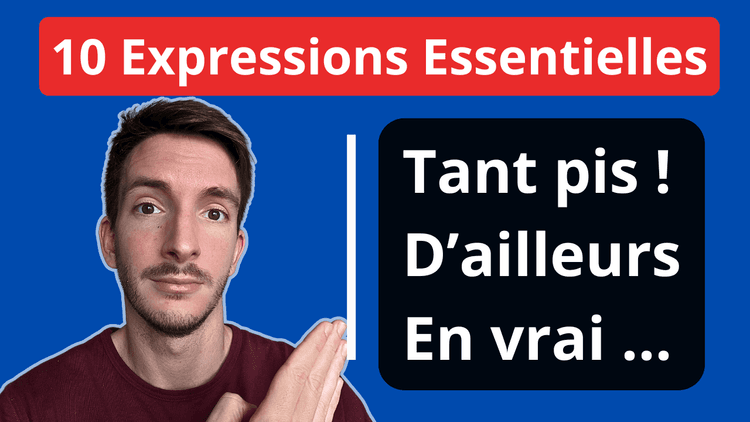Mastering Formal Questions in French: Techniques and Exercises
Difficulty:A2
-
March 6, 2024
3/6/2024
Hello and welcome everyone! Today, we're going to explore together an essential aspect of the French language: the formal question. You may have already discovered how to ask questions using "est-ce que" or "quel". Now, it's time to dive into the world of formal questions, a powerful tool to make your conversations more elegant and respectful. Whether you're a beginner or looking to perfect your French, this lesson is for you. Ready? Let's go!
The Basics of Formal Questions
To understand formal questions well, it's important to remember the two main types of questions in French: closed and open questions. Closed questions call for a simple answer, often a "yes" or a "no". For example:
- Avez-vous une table de libre ?
- Oui, j'ai une table de libre.
On the other hand, open questions require a more detailed answer. They usually start with an interrogative word like "où", "quand" or "comment". These questions invite multiple and more elaborate answers, for example:
- Où allez-vous ?
- Je vais à la bibliothèque pour étudier.
In this case, one cannot simply answer yes or no.
We have already seen how to ask questions using "est-ce que" and "quel". However, by using formal questions, we can make our interactions more respectful and formal, which is particularly useful in professional contexts or when addressing people we do not know well.
Structure of Formal Questions
Let's now get to the heart of the matter: the structure of formal questions. This type of question is characterized by its ability to formalize the exchange, thus bringing an additional level of politeness to your conversations.
For closed questions, the magic formula lies in the inversion of the verb and the subject. This concise and elegant structure is ideal for respectful interactions.
- Avez-vous une table de libre ?
- Oui, nous avons une table de libre.
Regarding open questions, the principle remains similar but requires introducing an interrogative word at the beginning of the sentence. This structure highlights the interrogative word and enhances the clarity of the question.
- Où allez-vous ?
- Je vais au cinéma voir le dernier film.
The addition of the "t" aesthetic
It's important to note that this inversion may sometimes require the addition of an "t" aesthetic between the verb and the subject, especially when the verb ends with a vowel and the subject also starts with a vowel. This addition aims to facilitate pronunciation and to avoid the unpleasant collision of two vowels.
- Va-t-il à l'école demain ?
- A-t-elle déjà visité Paris ?
Without the addition of the "t", these questions would be less harmonious to the ear: "Va il à l'école ?" or "A elle visité Paris ?" do not sound correct.

- Types of Questions : Closed (yes or no answer) and Open(detailed answer).
- Formal Closed Questions : Use the inversion of the subject and verb to formulate a respectful and concise question, for example: "Avez-vous une table de libre ?".
- Formal Open Questions : Place the interrogative word at the beginning, followed by the subject-verb inversion, for example: "Où allez-vous ?".
- "T" Aesthetic : Add a "t" between the verb and subject to maintain phonetic harmony when linking vowels, for example: "Range-t-il sa chambre ?".
Practical Exercise
Let's put into practice what we've learned! Take the following questions and transform them using the formal structure. Don't forget to invert the subject and verb for closed questions, and for open questions, make sure to place the interrogative word at the beginning of the sentence followed by the inversion.
Shuffle
Loading...
Particularities and Exceptions
Some particularities and exceptions deserve our attention. These details may seem minor, but they play a crucial role in the fluidity and correctness of our expression.
The case of "quoi" which becomes "que"
Another particularity concerns the word "quoi" which often turns into "que". This transformation allows maintaining the formal structure of the question.
- Tu fais quoi ce weekend ?
- Que fais-tu ce weekend ?
However, there are exceptions when "quoi" is preceded by a preposition. In this case, "quoi" remains unchanged to maintain the clarity of the sentence.
- De quoi parles-tu ?
- Avec quoi peux-tu venir ?
Managing nominal subjects
When the subject of a formal question is a noun (and not a pronoun), it's necessary to add a personal subject pronoun after the verb to maintain the correct structure of the question.
- Le professeur comprend-il la question ?
- Les enfants vont-ils à l'école aujourd'hui ?
In these examples, the personal pronoun "il" or "ils" is added after the verb to complete the inversion, which would not have been necessary if the subject had been a pronoun from the start.
Sentences with two verbs
In constructions with two verbs, like sentences in the near future, recent past, or modals, the inversion is only made on the first verb. The subject pronoun is then placed between the two verbs.
- Va-t-elle venir à la fête ?
- Allez-vous essayer ce nouveau restaurant ?
It's not always easy to follow the grammatical rules of French, is it? 🤯

- Transformation of "Quoi" into "Que" : To maintain the formal structure, "quoi" transforms into "que" in questions. Exception: when "quoi" is preceded by a preposition, it remains unchanged. Examples: "Qu'en penses-tu ?", "De qui parles-tu ?"
- Managing Nominal Subjects : When a noun is the subject of a question, a personal subject pronoun must be added after the verb for inversion, for example, "Le professeur comprend-il la question ?".
- Sentences with Two Verbs : In formal questions involving two verbs, the inversion is only made on the first verb, and the subject pronoun is placed between the two, for example, "Va-t-elle venir à la fête ?".
General Exercise
Transform the following sentences into formal questions. Make sure to apply the rules of subject-verb inversion, use the "t" aesthetic where necessary, and respect specific cases like nominal subjects and two-verb structures. Good luck!
Shuffle
Loading...
Conclusion
By exploring the formal question in French, we have traversed the nuances that differentiate closed from open questions, mastered the art of subject-verb inversion, and uncovered the significance of the "t" aesthetic along with the transformation of "quoi" into "que". These skills are essential for crafting precise and elegant questions, thereby enhancing your ability to communicate respectfully and professionally in French.
For those eager to deepen their understanding and fully grasp these complex rules, our video courses on Udemy offer an ideal opportunity. With thousands of students already benefiting from our structured and interactive approach, these courses will guide you step by step towards a solid mastery of French.
We thank you for your attention and wish you un excellent apprentissage of French!

Subscribe to our newsletter
Latest posts
Browse all posts
Subscribe to our newsletter
Stay informed and get a free video

